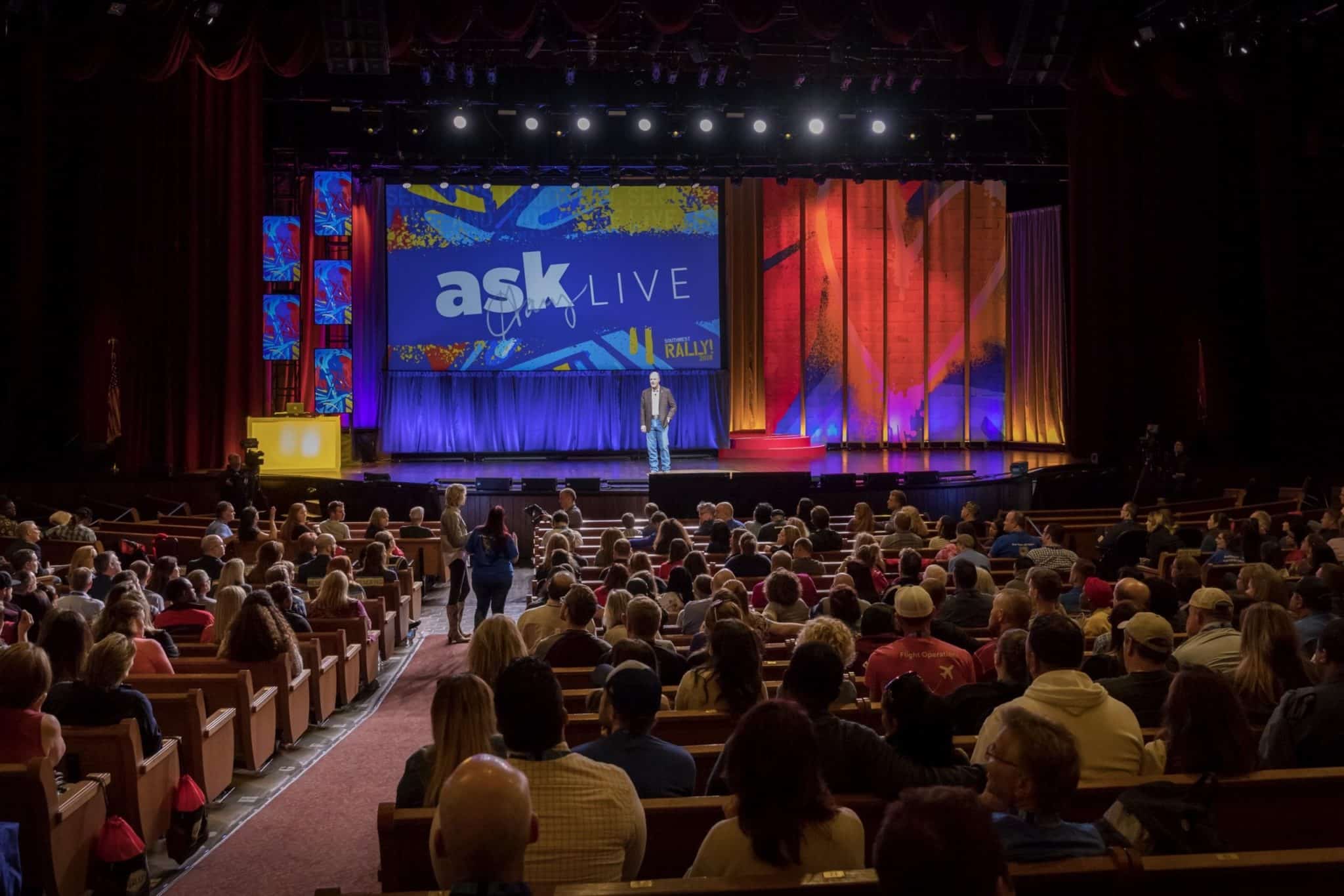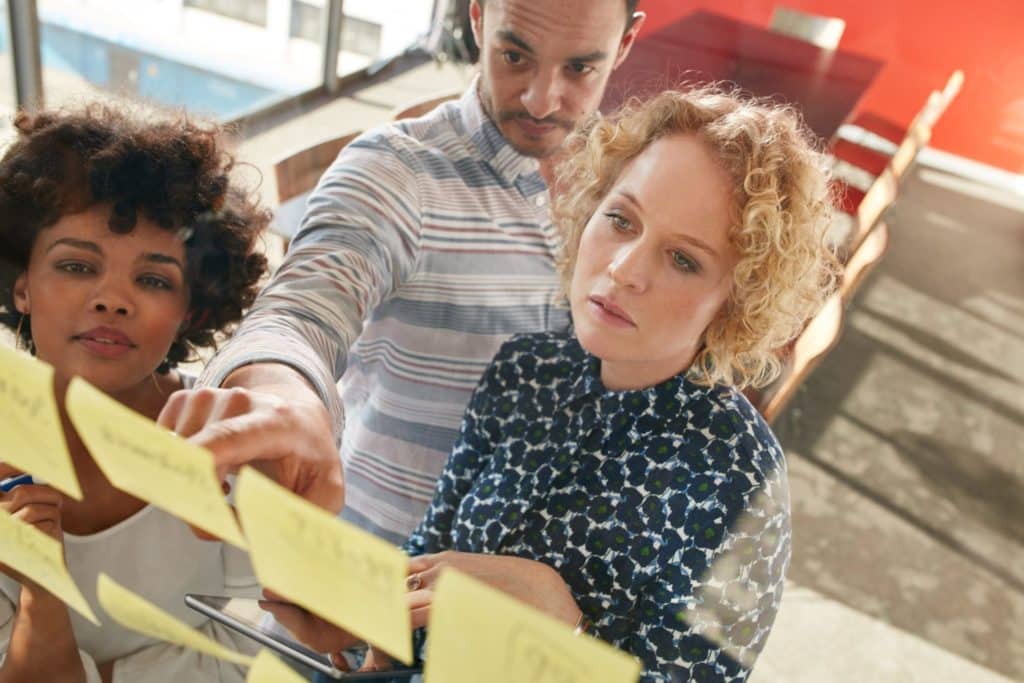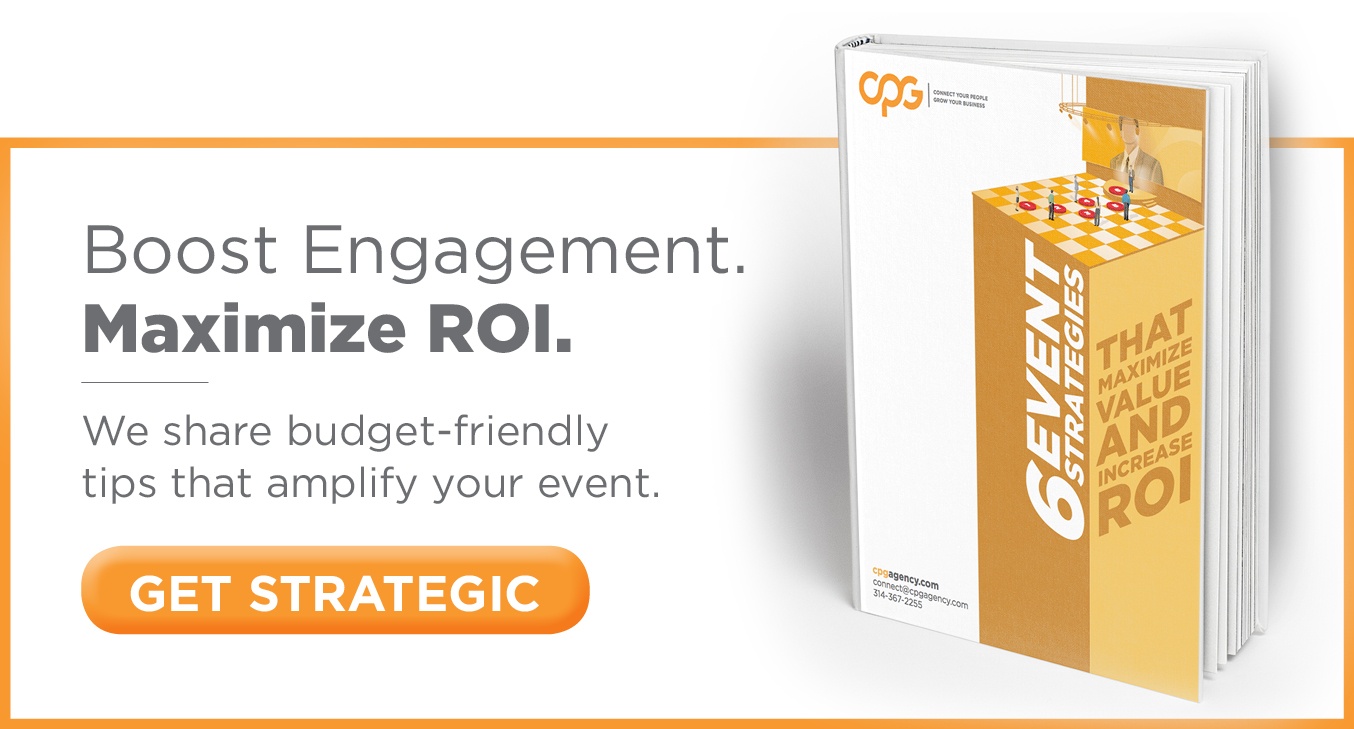- What is the purpose of the conference?
- What specific goals must be accomplished at the event?
- What message do you want your people to walk away with?

Corporate Event KPIs
When it comes to corporate event planning, hitting your KPIs is a must. But how do you really know if your event was a success? For starters, you need to take a look at your attendance rates. This is one of the most efficient ways to estimate your conference’s reach and impact. If numbers are up this year relative to last year, great! When an event’s size trends upward it can be attributed to so many positive outcomes, like brand advocacy, pre-event communication, business growth, etc.Just because more people went this year, it doesn’t mean they’ll be back next year. With this in mind, KPIs also need to include your audience’s overall engagement factors during and after the event.A live audience poll is an effective tool that can gauge the success of different aspects of your event, such as keynote speakers, exhibits, and demos.
 User-generated content is another great indicator of attendee engagement and participation. (Not to mention, it makes for great content that can live on post-event.) Twitter walls, for example, allow users to share live interactions, putting their names and ideas on display for all to see. In return, you’ll be given a first-hand look into their event experience and how to iterate the following year.
User-generated content is another great indicator of attendee engagement and participation. (Not to mention, it makes for great content that can live on post-event.) Twitter walls, for example, allow users to share live interactions, putting their names and ideas on display for all to see. In return, you’ll be given a first-hand look into their event experience and how to iterate the following year.
Measuring Corporate Event ROI
As the corporate event planner, the annual conference reputation lies in your hands. This can make demonstrating ROI on an internal corporate event a little intimidating. Luckily, there are specific approaches you can take to ensure your event delivers the most ROI. A good rule of thumb is that a truly engaged audience delivers on ROI. Engaged workforces are more productive than burned-out employees. With this in mind, the ultimate goal of your conference should be to maximize engagement.Higher Engagement = Increased Productivity = Better ROIBy thinking strategically and setting clear objectives, you can determine the key messages early on and focus on engaging your audience throughout the event. The most effective way to inspire your audience is to connect with them on an emotional level. Studies show an audience is more likely to believe and remember content they’re emotionally connected with. Finally, a key element that is often overlooked is keeping the emotional engagement going long after the conference concludes. If you want to continue to build upon the excitement that was created at your annual conference, post-event communication is critical. While you may not be able to achieve the same energy levels, relevant messaging following the event can remind them of your brand purpose and directly contribute to leveraging event ROI.

Corporate Event Surveys
There are several ways you can measure internal and external satisfaction. To really get a sense of your event’s ROI, though, the most direct way is to survey your attendees before and after the event. Your pre-event survey can revolve around recent brand changes and initiatives or you could ask attendees to rate their feelings towards company communication and clearness of direction. This survey serves as a baseline and ensures your event is unique and memorable.
Now that you understand how your attendees felt before the event, conduct a post-event survey and see how their answers are different now that the event is over. This survey measures what they learned, if they enjoyed the event experience and whether or not your content helped drive your brand message home.
Your pre-event survey can revolve around recent brand changes and initiatives or you could ask attendees to rate their feelings towards company communication and clearness of direction. This survey serves as a baseline and ensures your event is unique and memorable.
Now that you understand how your attendees felt before the event, conduct a post-event survey and see how their answers are different now that the event is over. This survey measures what they learned, if they enjoyed the event experience and whether or not your content helped drive your brand message home.
By allowing your people to give anonymous, open feedback, you will have a better understanding of how to make your events more successful moving forward.
The importance of goal-setting is something we can’t stress enough. By identifying goals and the objectives early on, you create a clear path for event success, making it easy for everything else to fall into place.
If your event strategy doesn’t align with your goals, you risk creating a disconnect between your brand message and attendee journey.Measurable goals make it easy to prove your corporate event’s ROI, further growing your brand. If proper event planning has taken place, attendee disengagement should be a thing of the past.
